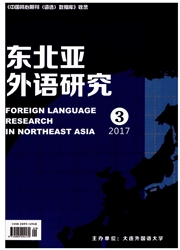

 中文摘要:
中文摘要:
在俄罗斯,孔子形象的塑造,是以对《四书》等儒学著作的翻译为基础,以对它们翻译的注释为延伸,以研究孔子生平思想的著述为载体的。本文分析若干位俄罗斯汉学家、作家对孔子著作的翻译、注释、研究,梳理孔子形象在18世纪80年代、19世纪、20世纪80年代以前、20世纪80年代以后四个时期的塑造。本文还探讨了在俄罗斯孔子形象的塑造与俄罗斯主流精神变迁的相关性等问题。借助历史符号学可知,孔子之书本身是个文本系统,它另外可以有多个语用学的意义系统,在俄罗斯的社会语境中它产生出丰富的引申意义。
 英文摘要:
英文摘要:
The shape of Confucius image is based on the translating of Confucian classical works like Four Books and further extended by the annotating of the translation versions,as well as the writings of Confucius' life and ideology.The paper attempts to figure out how the image of Confucius was shaped in the 1780s,the 18th century,before 1980s and in the 1980s through analyzing the achievements of several Russian sinologists including their translation versions,annotation and studies on Confucian classical works.The paper also discusses the relation between image-building of Confucius in Russia and Russian mainstream spirit transition.In light of historical semiotics,it is found that Confucian classical works,on the whole,are a text system having multiple systems of pragmatic meanings and connotative meanings that are profoundly produced in the context of Russian culture.
 同期刊论文项目
同期刊论文项目
 同项目期刊论文
同项目期刊论文
 期刊信息
期刊信息
